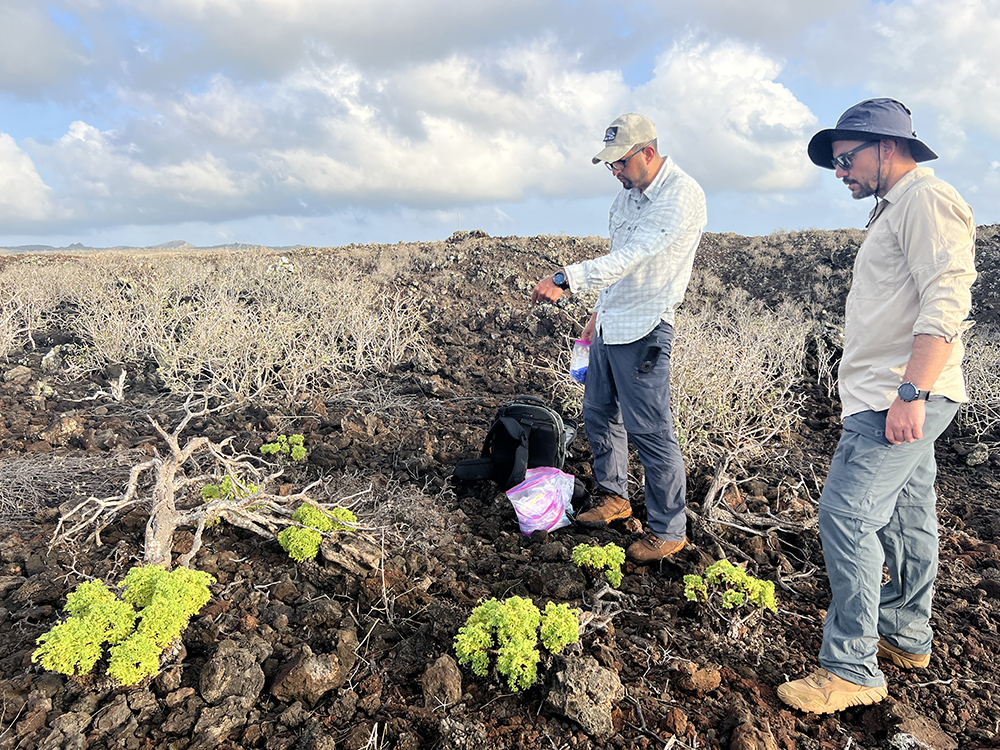Sampling endemic plant species of the Galapagos Islands.
Authors: Victoria Castro and Karina Vivanco
Editing: Kelly Weaver and Karina Vivanco
Review: Pieter Vant Holf and Jos Raaijmakers
Galápagos keeps inspiring scientists to study the evolution of animal species such as the finches, iguanas and tortoises. Also, various endemic plants, with Scalesia as “the Darwin finch of the plant world”, have diversified into various species on the different islands. To date, however, we have no detailed knowledge of the diversity of microorganisms associated with Scalesia and if/how microbiome members contribute to the growth, survival and diversification of this endangered plant species.
The ‘Scalesia Microbiome’ project is pioneering in studying the taxonomic and functional diversity of the microbial communities associated with the Scalesia genus on the Galapagos Islands. The project aims to understand how bacteria, fungi, and other microorganisms have diversified across the islands and how they contribute to the growth and survival of Scalesia plants in the harsh island environments. To this end, the project team collected soil, root and leaf samples from the different Scalesia species on multiple islands. The obtained results can be instrumental for restoration programs of Scalesia and other endemic plants on the islands.
The ‘Scalesia Microbiome’ project is coordinated by Pieter van ‘t Hof, a biology professor at USFQ and GSC researcher, and by Jos Raaijmakers, Director of the Department of Microbial Ecology at NIOO-KNAW and professor at Leiden University in the Netherlands. The project is part of the larger overarching ‘Galapagos Barcode Project’ that catalogs the biodiversity of the Galapagos Islands through the collection of genetic information from multiple species and environmental samples (water, soil).
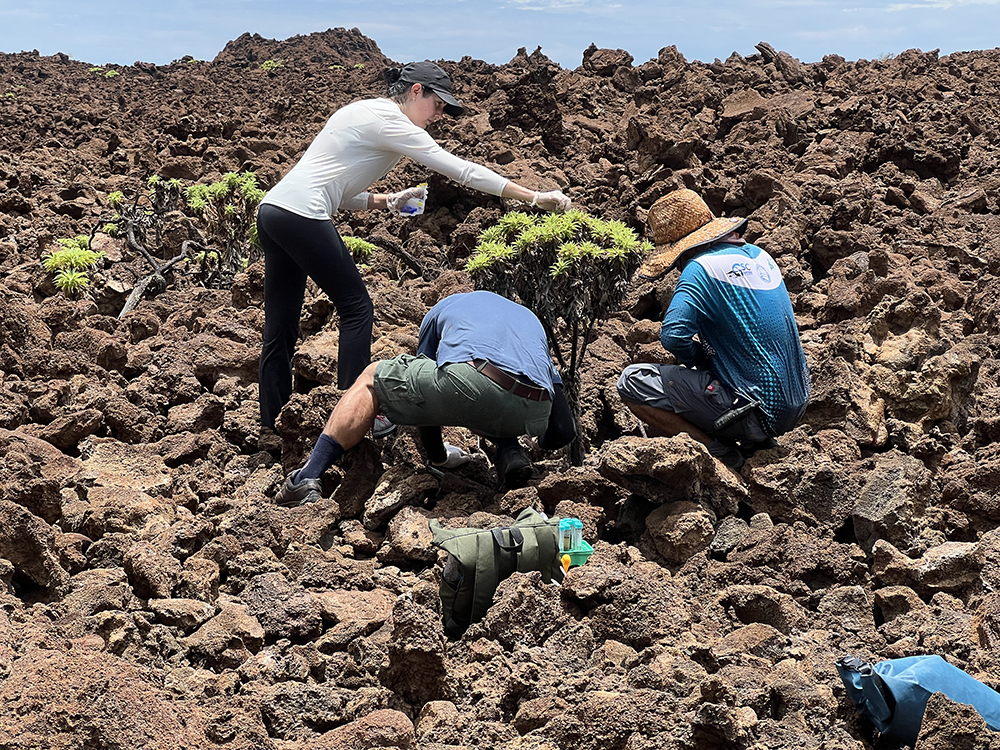
“Scalesia has attracted attention to the diversification of plant species on the Galapagos Islands. To date, however, no one has examined the microbial world of the distinct species across the islands. This research seeks to discover the microbial world that Darwin could not see at that time. We now have advanced technologies to identify the diversity and functions of microbes on Galapagos, with a focus on microorganisms living on the surface and inside root and leaf tissue of Scalesia”, says project leader Jos Raaijmakers
Prevention and conservation of protected areas:
The project aims to identify the diversity and functions of the microorganisms associated with the roots and leaves of Scalesia species. It also seeks to understand the prevention of extinction of the plant by making informed decisions about the management of protected areas. “These results can serve environmental authorities to make appropriate decisions on the proper management of protected areas. By better understanding how to help Scalesia species, we can protect and reintroduce them into their environment if necessary for their conservation.” Gonzalo Rivas Torres, professor at USFQ, researcher at GSC, and director of the Tiputini Biodiversity Station in the Ecuadorian Amazon Rainforest.
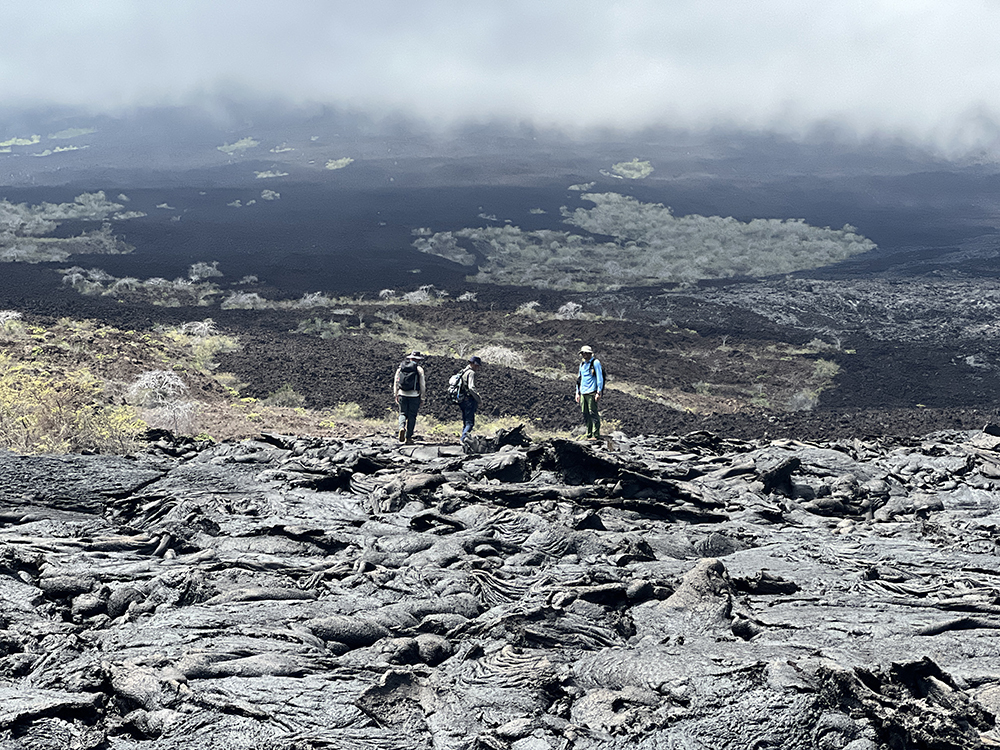
Understanding their adaptation and survival in a unique ecosystem:
In 2021, during the first phase of the Galapagos Barcode Project, sampling expeditions were carried out on the islands of San Cristóbal, Santa Cruz, and Isabela. In the second phase, carried out from March 27 to April 3 2023, an 8-day research expedition was conducted to the islands of Floreana, Fernandina, Isabela, Santiago, Pinzón, Santa Fe, and San Cristóbal. The expedition focused on sampling the microbiome of the roots and leaves of different species of endemic Scalesia populations.
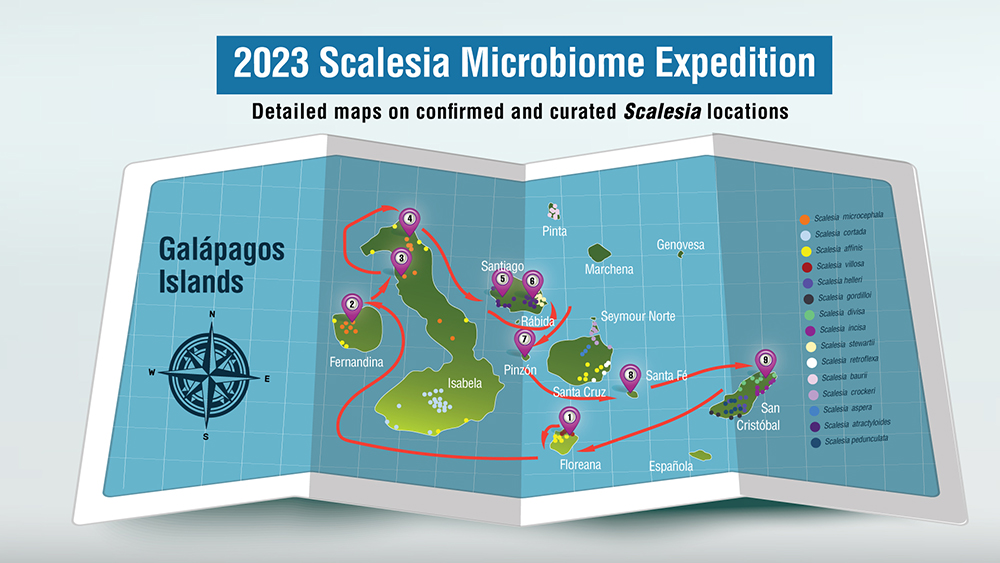
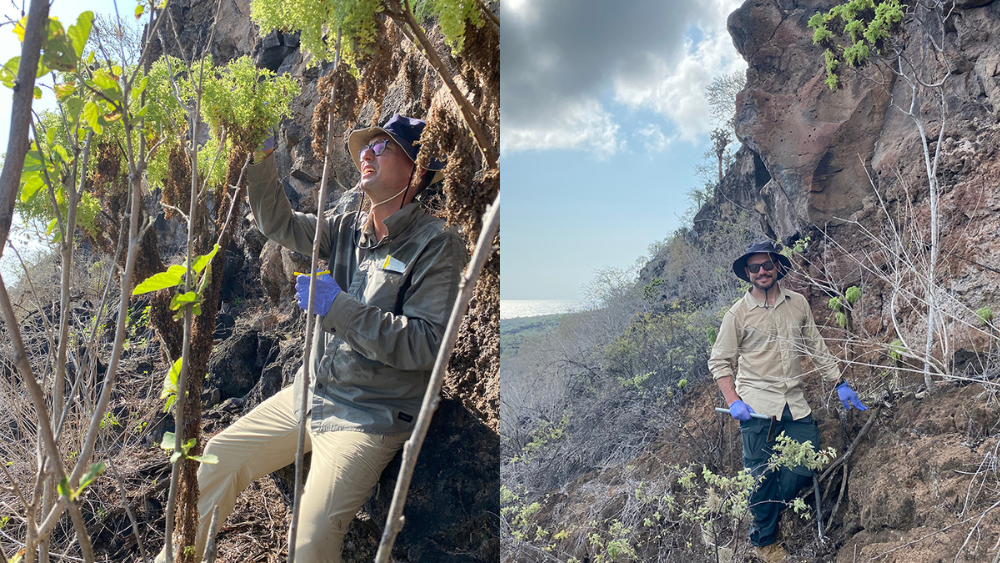
The main objective of the project is to uncover knowledge about how members of the Scalesia genus recruit microbes in the rhizosphere (zone near the roots), phyllosphere (aerial part of the plants) and endosphere (internal part of the leaves and roots). Given the future effects of climate change, it is known that certain microorganisms could help plants survive under adverse conditions. Studying the microbial communities surrounding these plants can provide valuable information on the survival and adaptation of species in the unique and harsh ecosystems of the Galapagos.
Outlook:
With the samples collected in the recent expedition, the research team was able to collect samples from almost all 15 species of Scalesia in the archipelago. DNA was successfully extracted from all samples and the next steps will be sequencing as well as isolation of microbial communities to profile their taxonomic and functional diversity. “We hope, on the one hand, to find specific signatures of the Scalesia microbiome in the roots and leaves that align with the Scalesia diversification in different islands. On the other hand, we hope to discover new microbial species and microbial traits associated with the Scalesia genus, discovering the microbial world that Darwin could not see during his visit to the Galapagos Islands in 1835,” says Pieter van ‘t Hof, a biology professor at USFQ and GSC researcher.
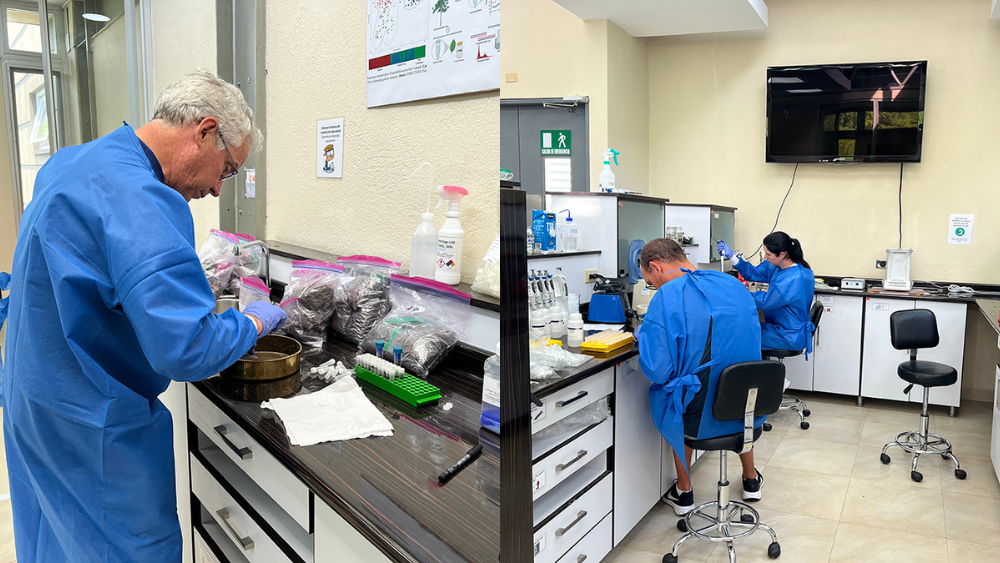
The evolution of soil and plant microbiomes in the Galapagos Islands:
The study of soil and plant microbiomes in the Galapagos Islands will provide a deeper understanding of the genetic diversification of Scalesia species and their functional relationship with microbes present on and in the roots and leaves. Additionally, this study may reveal diversification of soil microbiomes across different islands and their association with specific physical and chemical characteristics of the volcanic soils. The different ages of the islands sampled during the second phase will provide a unique insight into how environmental and biological factors have influenced microbial diversity. It is also possible that unique microbial species and yet unknown microbial functions may be discovered.
Project leaders:
This research project is carried out in collaboration with Universidad San Francisco de Quito (USFQ), the Galapagos Science Center (GSC), the University of Malaga (UMA), the Netherlands Institute of Ecology (NIOO-KNAW), and the University of Leiden.
- Pieter van ‘t Hof, biology professor at USFQ and GSC researcher, expedition leader and microbial ecologist in Quito.
- Jos Raaijmakers, director of Microbial Ecology at the Netherlands Institute of Ecology (NIOO-KNAW) and professor at the University of Leiden, project leader.
- Gonzalo Rivas Torres, professor at USFQ and director at the Tiputini Biodiversity Station, joint expedition leader and specialist in taxonomy and evolution of Scalesia and other Galapagos plants.
- Viviane Cordovez, microbial ecology researcher at NIOO-KNAW, studies the Scalesia phyllosphere microbial diversity and particularly yeast species
- Víctor Carrión Bravo, molecular microbiologist at the University of Malaga and the University of Leiden, studies the interactions between rhizosphere and endosphere microorganisms and plants in their natural environment.
- Diego Ortiz Yepez, GSC associate researcher, performs environmental DNA analysis of marine biodiversity in the Galapagos Marine Reserve.
- Haig Balian, documentarist and NIOO-KNAW associate.
- Wilson Cabrera, Galapagos National Park ranger (PNG).


